



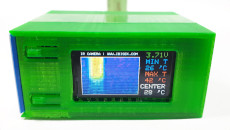
A tiny handheld Li-ion battery-powered IR camera based on the Melexis MLX90640 chip. The sensor provides reading from modest 32x24 interlaced pixels with specified temperature range -40°C ÷ 300°C.
The datasheet promises 40 frames per second, however in reality the I2C connected sensor provides mere 2 fps even when running the bus at 1MHz while even other builders report the same problem. What's the trouble Melexis, huh? :P
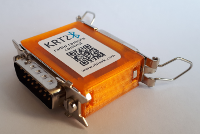
KRT2 radio bluetooth adapter to instantly set current or standby frequencies from LK8000 or XCSoar navigation software or seamlessly manage frequency-list memory with the option to keep separate lists for club or competition flying.
In 2018 we were all forced to purchase new and 'better' radios to our gliders due to 25 to 8.33 kHz transition. The old radios worked just fine and their user interface was friendly. With this new radios a simple task of creating and amending memory records became unspoken hassle and hence this adapter with accompanying android application has been created. The adapter can be home-built or purhased from ogn.ibisek.com and the app downloaded from the link right below.

Wireless display for LKKA pilots to get instant view over the local weather conditions, runway in use and other information useful for safe flight and timely return home.
Valuable info is presented on the MAX7219-based matrix dot display of 32x8 pixels driven by ESP8266 microcontroller. Weather data from local home-brewed but wind-tunnel calibrated weather station is processed by a remote python processor and over MQ delivered to the screen. In case the weather station is out of order relevant data is sourced from openweathermap.org. In case all of data sources fail only local (NTP-synced) time is shown. Enclosure is 3D printed from transparent PETG and the display shielded by light duffuser made of sanded glass. Air vents from the rear side shall keep the electronic at acceptable temperature.

VFR Manual CZ is an Android phone application that gives a pilot all required and needed information about the airport/airfield of planned arrival.
It offers clearly legible interface with easy one-hand control which predetermines it to be used both on board during the flight and makes it an always-at-hand aid while doing a pre-flight planning.

The OGN Cube ONE tracker has been created as a contribution to the Open Glider Network project. Tracking can bring exciting opportunities not only for competition flying but also for regular day to day flights on sailplanes, ultralights or even 'big' GA aircrafts.
It excels in tiny dimensions, negligible power consumption and long range. It is great for installation both behind the dashboard or placement inside the centroplane or side pocket in the cabin.
Powering it through USB-A makes it very convenient while migrating among different gliders on competition or club. It is possible to source its power from an USB battery bank - on which it can continuously transmit approximately 48 hours - or directly from the on-board 12V battery.
It can receive data from other gliders in vicinity and retranslate their location message which helps to extend OGN coverage especially in mountainous areas. By smart filtering of received messages and limiting retranslation to one hop at most it actively limits bandwidth congestion in case of higher surrounding traffic.
The tracker capabilities has already been validated across the vast airspaces of the Czech Republic, Austria and Poland during the Czech Regionals 2017. For more detailed information on all aspects and availability please follow the link right below:
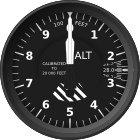
Development of an experimental optical altimeter targeted for UL and LSA aircrafts has started very recently. Its main purpose is to inform and warn the pilot of being unapropriatelly high or low when doing the final approach. The research objective is to find a way of receiving altitude information from and alternative source, specifically an IR hi-fps camera attached to Raspberry Pi. The data is to be pre-processed by OpenCV and consequently tweaked by advanced computer vision algorithms.
After a long time, this is not a one-man-show. This work is under development with guys from the Institute of Aerospace Engineering at VUT Brno and the embedded hardware experts from Glider Tools. The altimeter's function will be validated on SkyLeader600 designed and manufactured by Jihlavan Airplanes.

Panotrix is a Hugin-based photo stitching web utility enabling its users the ability to create panoramatic scenes without installing or purchasing a specialised application on their computer.
The Spring-MVC based frontend provides a tool to upload separate photographs and to subsequently download stitched panoramas when the process is done (the user can be informed by email). The backend is a set of bash scripts downloading and analysing individual shots, executing the Hugin binaries and uploading the resulting panorama including related logs back to the frontend server. This functionality has been designed with regard to the time-demanding nature of the image processing, making it scalable by running in parallel on multiple servers and thus to speed-up many concurrent requests.

IbiProxy is an experimental project intended to hide user's web browsing from snoopy admins and internet providers.
The idea was to extend the Anonymouse.org web proxy (which is just hiding your identity from remote servers) by keeping secret also the content (through SSL) and URLs you are visiting (by using cached and hashed links in the webpages).
Unfortunately, as it is not that easy to transform all referenced resources (javascript-based menus or javascripts), it may (and does) disturb the page structure or even expose 'raw' (original) URLs. On the other hand, it works well on simple pages (like those published for mobile devices).

iCamp was intended as a platform for recording and publishing lectures and invited talks at the university.
The project comprised of three elements: (1) Capture - for recording of video and audio streams, (2) Post-processing - step for editing and audio enhancements, and finally (3) the actual presentation. There was also a 'shortcut' omitting step #2 for live streams.
Based on opensource technologies and enthusiasm of involved people, this could have been a wonderful alternative to existing commercial solutions. Unfortunatelly, the project was stopped and the university eventually favoured an expensive mainstream software package.
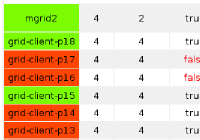
AJAX-enabled web-based application displaying status of a 16 4-CPUs MAC server machines, including current status of Java/Mathematica+based computation cluster.
Way before Wolfram's gridMathematica even existed, we already had the ability to exploit its power in parallel. An underlying ibiJavaCluster was taking care of distribution, updating and execution of scripts evaluated by Mathematica kernels. Additionaly, these scripts also used the ibiJavaCluster infrastructure to relay messages among each other and a main execution/control node if required.
The whole suite comprised of a nifty library making a bridge between Mathematica, Java and Linux services, ibiJavaCluster and a lot of hacking to make this work on the uni's network.
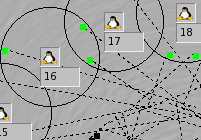
This was a very successfull experiment with the famous openMosix clustering linux kernel module. Harvesting 17 CPUs and almost 6 gigs of memory represented a decent computation power in that moment.
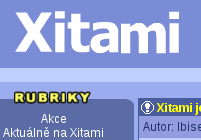
Xitami used to be a student portal at the Faculty of Technology, now part of the Tomas Bata University in Zlin. Started in 1999 as a simple textbook and study material exchange "Skriptoviste", extended by "FT-Help" to finally transform to a big thing, gathering a wide community of open-minded students across all the faculties.
The gathering around Xitami have organised numerous public events. The highlights are the first Majales in Zlin (after a long break in 2003; the tradition continues) and famously disorganised movie projections.
Designed and developed in friendly cooperation with Piskot during hot summer 2000 while being roasted in the classroom #507. Greetings to Czerw, Jelly, Boldos, Lanyz, Paja, Jezinky, Kubice, Ghaan and our tiny mascot and mad contributor Psycho! :)

OGN CUBE generation 3.5 is the most recent evolution of an Open Glider Network tracking unit.
Besides basic tracking functionality it provides information about other airplanes in vicinity and estimation of their trajectories. It supplies valuable data into your navigation instruments and can issue warnings in case of pending and imminent danger. With small dimensions and negligible power consumptions it offers an excellent value and a great choice not only for glider and UL pilots.

Initially a weekend project (it can't take much longer, right?) to create s simple OGN data observer which would record take-offs, landings and overall flight times at the Křižanov airfield (LKKA) and near vicinity.
After several weeks in progress it was clear that for a nicely working and performant engine significantly more effort will have to be invested than anticipated at the early stages of development. Nowdays, the OGN logbook offers a real-time monitoring of numerous publicly known airfields (25262 at this moment) around the world with the support for multiple protocols like OGN, FLARM, ICAO and others. Additionally, some more sophisticated features like flight planning with optional safety elements and fleet management are on the roadmap.

Battery-powered wireless laser altimeter for UL airplanes. A demonstration unit which one can conveniently mount on an airplane without the need of cutting holes and pulling communication and power cables through the airframe skin. Developed as a part of the Landing Assistant project.
Both the transmitting and receiving sides are based on Arduino mini and the low-power NRF24L01+ radio module. Data containing information about correct functionality, ground altitude and battery voltage are transmitted ten times a second to an on-board unit advising to an unskilled pilot how to flare in the right height above ground.
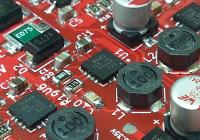
Raspi UPS has originally been developed as reliable power source for the Flight Assistant project. It consists of two rails step-down DC/DC converter (2 x 5V/1A) to supply enough current for the greedy Raspberry Pi and the main communication board of the unit. While providing stable supply for the Pi it also ensures the Pi will correctly shut down when the main power switch of the airplane is turned off. Additionally, there is another 5V outlet for the LCD which is not backed up.
The battery-charging and switching part of the unit can independently act as a reliable UPS as it contains battery management circuitry (charging / switching) step-up converter and a 32-bit microcontroller that creates a communication interface between the UPS and the Raspberry Pi (via I2C or UART). The UPS control script provides information about power loss, battery voltage, time on battery and gives full control over the UPS power management.

AliSearch is a meta-search engine sitting on shoulders of the Chinese giant's Aliexpress' search. Its purpose is to refine search results yielded by the original web page and rearrange the data in order to provide best reasonable results without gibberish, mainly from the cost-optimisation perspective.
The original search seems to be rather inconsistent and does not provide much useful filtering options and does not give an immediate access to the whole picture of items currently available. This project is intended to amend this and to improve the (not only) gadgets and electronic parts search and selection experience.

Once a glider pilot cannot make it home and is forced to land on a field, assistance of a ground crew bringing the unlucky guy and the plane back to the home airfield is highly appreciated. To navigate your friends precisely on the spot, immediate fine orientation is required. This usually involves an angry pilot rewriting GPS coordinates from on-board navigation or a separate app to an SMS, in which one can easily make a mistake. Such mistake can then result in the rescue squad searching for the glider far far away.
For that matter there is a simple Android app to send exact GPS coordinates and nearest town to your ground crew. The ground crew can also use it to receive the message and navigate seamlessly and instantenously to the landing spot. You can freely download and install it from the Outlanded home page.

The original intention was to build a thermometer array sensing and recording teperature across the house with the extension of 'optimal' heating control based on the readings. Later on, however, it became a mean of measuring situation across the office and observing room temperature depending on sunlight and the inappropriatelly-working air-conditioning equipment.
The first prototype was based on analog TMP36 which in combination with high noise and 12-bit ADC indicated very inaccurate values. The second (and current) approach utilises the DS18B20 one-wire digital thermometer with precision of 0.5°C controlled by ATMEGA8-16PU AVR microcontroller. Readings are captured in 5-minute interval, via RS232 send to a node0 queue from which collected every 20 minutes by the presentation page (such 'complicated' solution and long intervals were introduced to prevent data loss when the presentation hits AppEngine's limited free quotas).
My further plan is to replace the internet-connectivity-providing laptop by using the V-USB library to read the data from an old android wifi-connected phone which would radically reduce power consuption and make this thermometer array even nicer :)

Node0 is a RESTful message queue with extended extended functionality for asynchronous machine-to-machine communication. Originally, it has been developed to provide me a simple and ultra easy-to-use communication intersection for distributed computation. Generally, it can be used for any machine-to-machine communication from any platform available, namely Python, Java or any other scripting language like bash or perl.
There is no hardcoded limitation on message count, frequency or size .. except the server's capabilities and its limits; it's up and running 24/7 on Google infrastructure. Everyone can instantly create and use either just a topic or freely deploy a standalone node0 instance(s) for any purpose imaginable.

Developed for an aircraft design bureau to refine hi-tech products scaling from tiny mechanical assemblies to entire airplane aerodynamics while pushing them them to best functional state possible (as far the models allow:).
The package harnesses the power of two evolutionary algorithms: Differential Evolution (DE) and Self-Organising Migrating Algorithm (SOMA), which can tune arbitrary optimised functions. No matter if your model is a set of Excel-based tables, C/Java/Pyton/ASM?/* code or even Catia-based, any interface can be connected.
At its initial state, it has been used to interface an Excel document modelling ambient conditions in a cabin in order to optimise air-contition unit performance. Nonetheless, models from any concievable area can be optimised.

Imagine a situation you need some file and you are not in reach of internet connection. It's a question of life and death to get that data. But how?
If you have a MMS and Java capable cell phone, this may help you. There is always a friend online who can send you the file via MMS. The datafile gets encoded into a PNG image (please note that there is a certain size limitation) and sent as MMS to your phone, on which you decode it back to original format using a specially developed app. And this is the app! :)
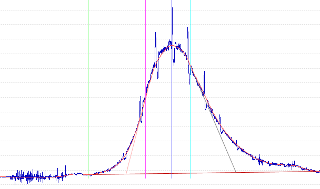
Application controlling and analysing data from a gas spectrometer device.
The device itself was commanded via RS232 serial line, from which generated data was also read. This data was consequently filtered and scanned for expected patterns. Based on these patterns, we could determine properties of analysed materials.

There was a requirement for native computationally-intensive optimisation tasks performed on the Java platform, while OpenMosix could not serve to that need (mainly as it could not migrate Java processes across our ad-hoc GNU/Linux cluster). For that matter, an unlimitedly scalable framework has been designed. Including the capability of automatic file distribution and data synchronisation, direct inter-node communication, running in configuration of either a single or multiple master-nodes in a network of subordinate nodes.
It has granted us an opportunity to execute simulations hardly doable a single or separate machine(s) and whose riveting results were published in multiple scientific papers. Additionally, a workshop-arrangement plan optimisation for a local precision engineering factory would not be possible to evolve to such degree of perfection without having employed this very gem.